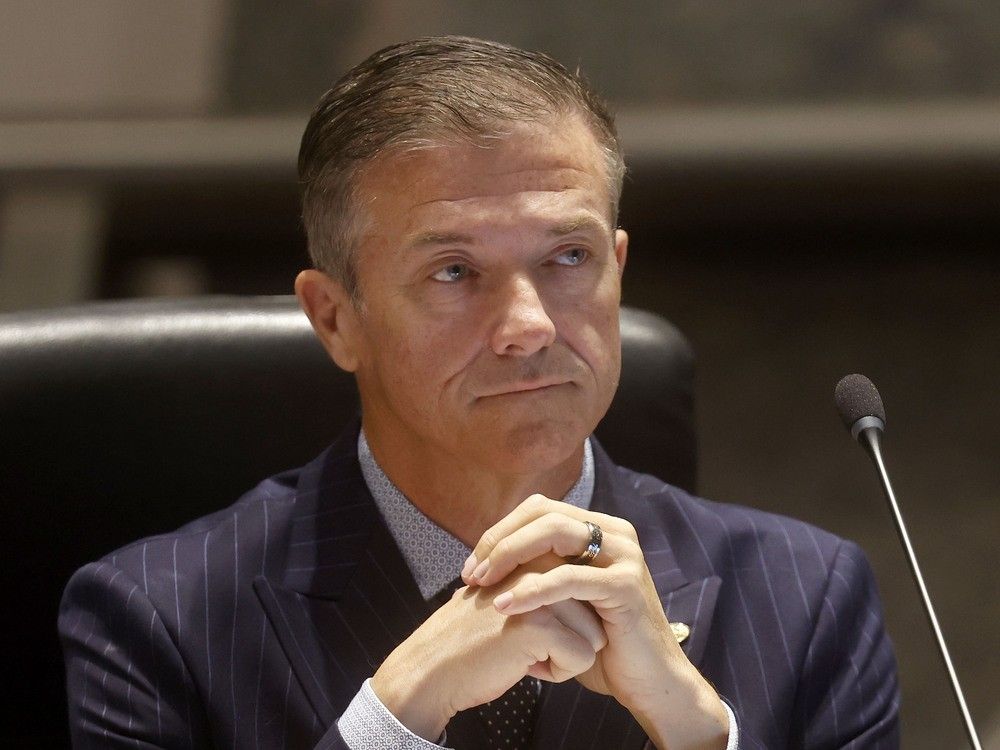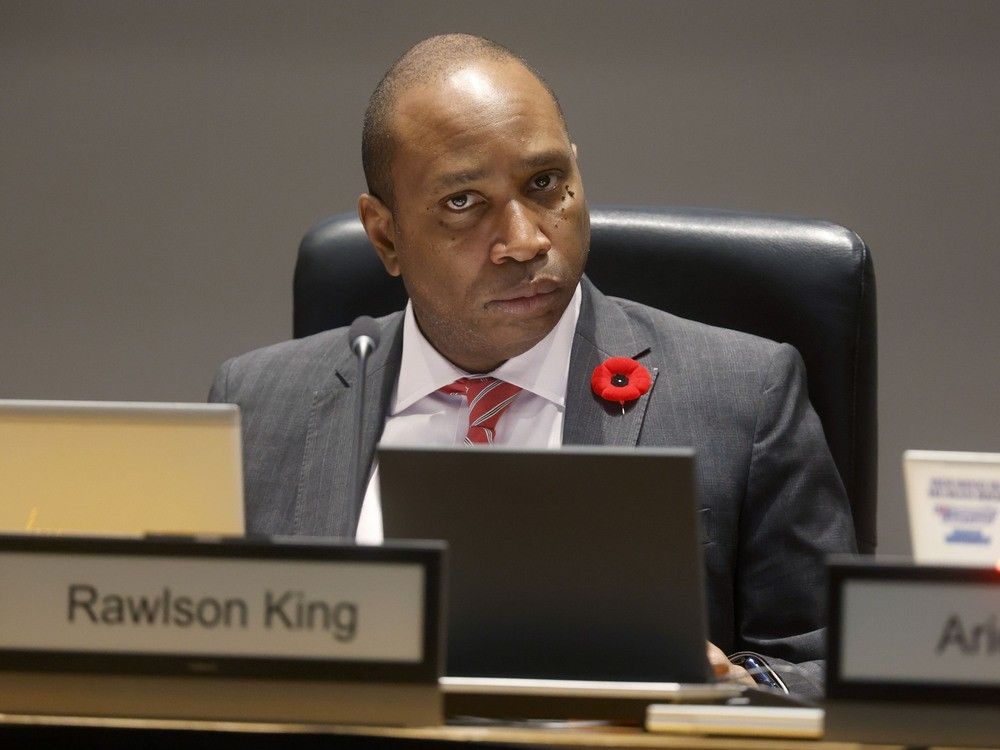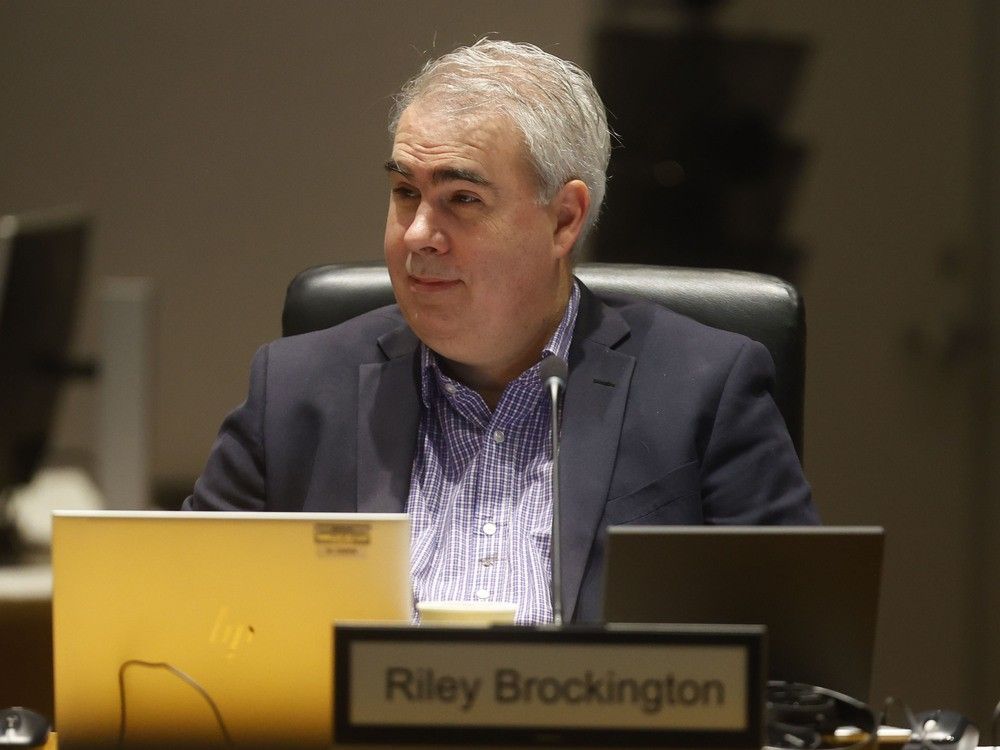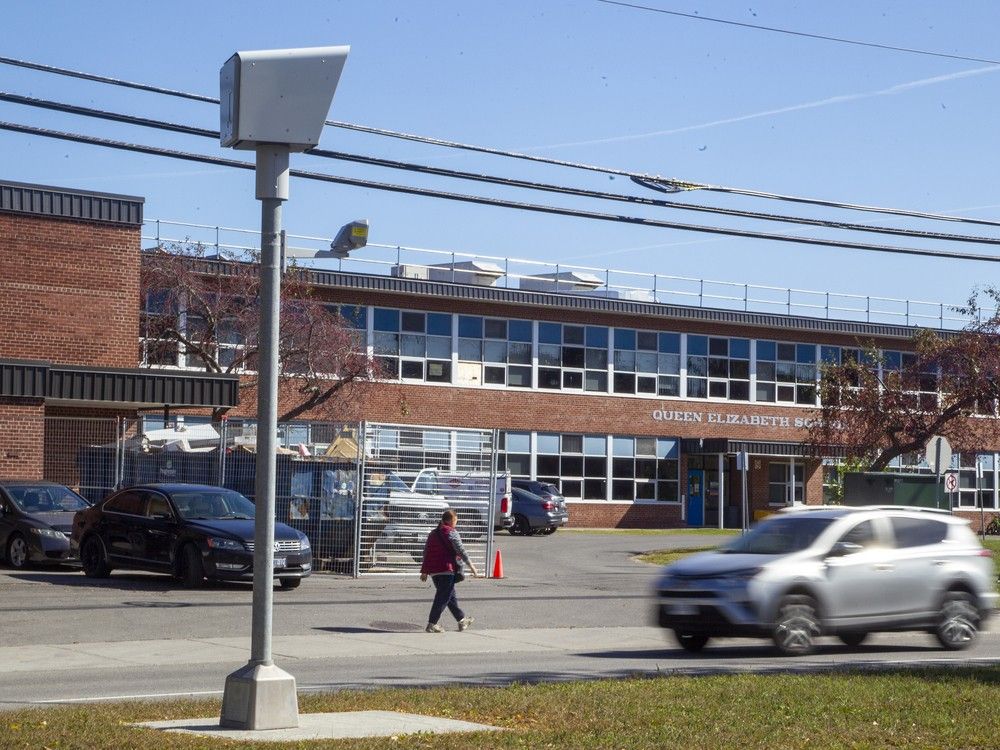Ottawa city councillors gave their unanimous endorsement to a motion affirming support for
the speed camera program
and urging the Ontario government to tweak the system rather than banning the cameras across the province.
Premier Doug Ford’s government tabled legislation earlier this week that would prohibit municipalities from using the automated enforcement program, labelling it a “cash grab” despite objections from a number of Ontario mayors who support the program.
Coun. Tim Tierney, who proposed the motion and has championed the continued use of speed cameras
in Ottawa school zones, arrived at the Oct. 22 council session armed with a prop, carrying an oversized yellow sign reading, “School Safety Zone, Fines Increased.”
The sign was reminiscent of the large flashing-light sign Ford employed when he announced the legislation in a media conference in Vaughan in September.
Tierney’s motion asked the the province to
amend its current legislation
to have larger “school safety zone” signs in place of the current “community safety zone” signs.

“We’re willing to look at turning off cameras that might not be in the school zones and we can have further discussions,” Tierney said. He has also extended an invitation for the province to participate in the speed threshold committee, which is formed by six municipalities and sets the speeding thresholds for tickets to be issued.
“We want to be part of a solution that sees cameras remain in the area of schools because that’s the ultimate goal,” Tierney said.
Rideau-Rockcliffe Coun. Rawlson King delivered an impassioned speech after a five-year-old child was struck by a dump truck and killed in Overbrook on Oct. 16.
“This is not about revenue. This is not about inconveniencing drivers.
It’s about saving lives
,” King said.

King referenced City of Ottawa data showing only 16 per cent of drivers were complying with posted speed limits prior to the activation of speed cameras in 2020. Within three years, compliance jumped to 81 per cent, and
high-end speeders
(those driving more than 15 km/h above the posted limit) dropped from 14 per cent to 0.7 per cent.
“These are not just statistics,” King said. “These are children arriving safely at school. These are families walking to the park without fear. And we know these cameras work because drivers themselves have told us so.”
A recent survey of Ottawa residents
showed that 69 per cent of people who had been ticketed said it changed their driving behaviour.
“That’s not punishment, that’s education,” King said. “That’s creating lasting change in how people operate vehicles in our community, and the public supports this approach … These aren’t fringe opinions. This is a clear community consensus that we have a responsibility to protect our most vulnerable road users, yet we find ourselves in an absurd situation.”
King said the city recently installed a new speed camera on Donald Street that the councillor and community groups had advocated for over the past five years.
“We can’t turn them on. These cameras will sit there, installed at taxpayers’ expense, ready to make that street safer, and we won’t be able to activate them because of the province’s impending decision. Think about the message that sends the area residents who recently lost a young child to a traffic incident … Think about the frustration of knowing we have the solution right there, but our hands are tied.”
Ottawa initially installed eight cameras at school sites in a 2020 pilot and has since expanded to 60 active cameras, including 50 that are adjacent to schools.
The city had planned to install another 20 cameras at school sites this fall, along with a pilot project to install four cameras in rural villages. Thirteen of those cameras were installed in recent weeks, but they have yet to be activated while awaiting the results of the proposed Ontario legislation.
No new cameras will be activated “until the legislation has been thoroughly reviewed and understood,” according to Kunjan Ghimire, the city’s manager of automated enforcement programs.
Coun. Riley Brockington said he was “disappointed that we have to have this discussion.”
The veteran councillor said he was the first member to raise the issue of speed enforcement cameras at council years ago and had the support of then-police chief Charles Bordeleau and other chiefs of police across Ontario.

Brockington said he was first municipal politician to testify at Queen’s Park when the current regulations were being considered.
“The use of speed enforcement cameras works. It does reduce the speed of the motorists in school and safety zones,” he said. “The province wrote the regulations. They have the ability and the authority to amend those regulations to address the key things that they’re concerned about.”
Councillors said the province’s proposed alternatives — like installing speed humps or roundabouts — were not possible on arterial roads.
“Can you imagine Greenbank or Woodroffe with speed humps? The (posted speed limits) are too high to install these alternative measures, so cars will be catching a lot of air,” Coun. Laine Johnson said.
Johnson said the fines collected from the automated speed enforcement program fund road-safety programs, including adult crossing guards, temporary traffic calming measures and intersection improvements.
“When that revenue is taken away from municipalities, we’ll have a hard choice to make,” she said. “We’ll either have to scale back those programs significantly or we have to fund them from the property tax base.
“We will not be able to do these things without asking all homeowners to help pay for these programs, not just those that break the law.”
Our website is your destination for up-to-the-minute news, so make sure to bookmark our homepage and sign up for our newsletters so we can keep you informed.
Related
- Sutcliffe’s Lansdowne 2.0 pitch was more spin than substance
- Private well users calling for City of Ottawa action amid ‘water emergency’



